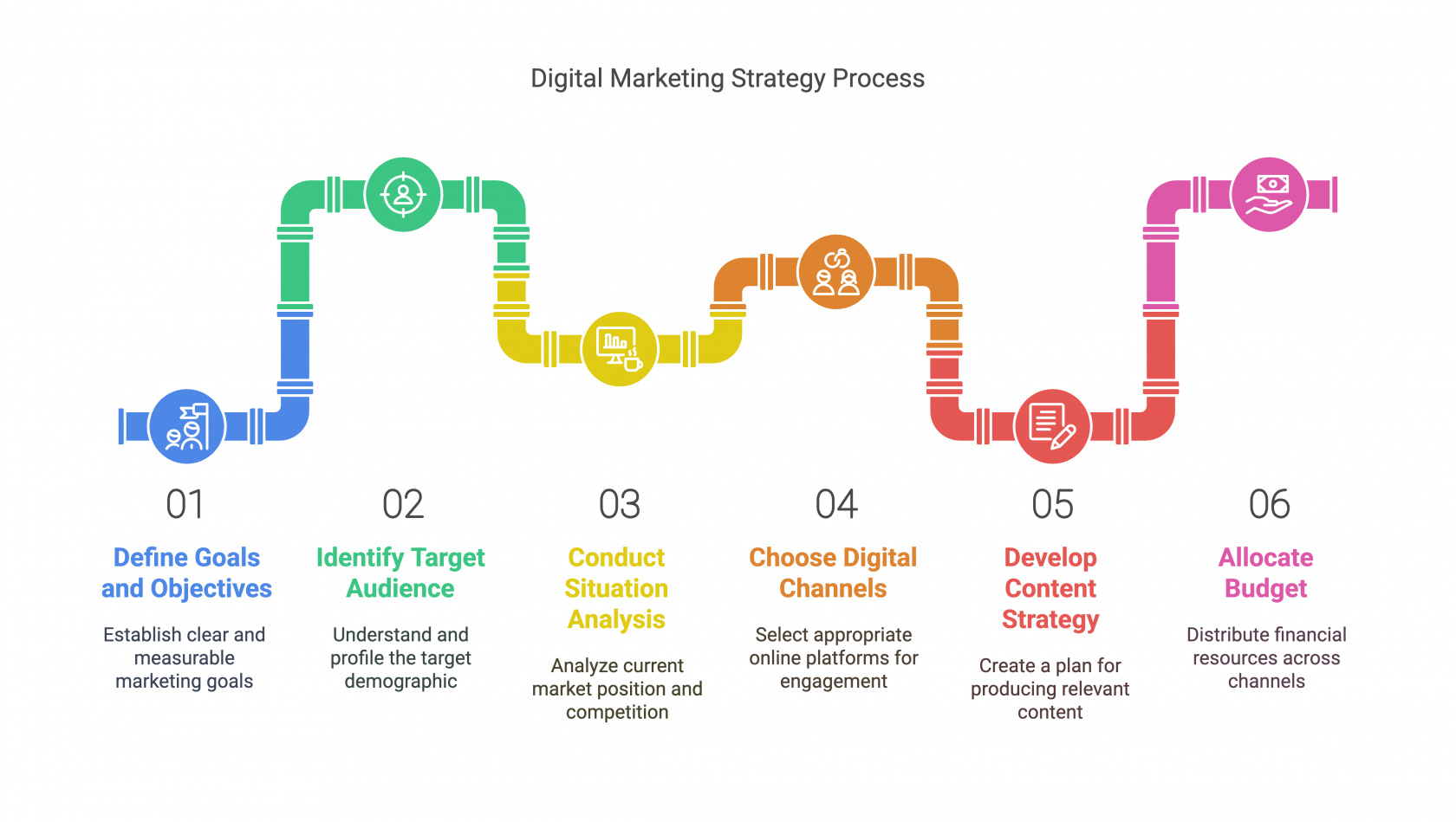How to structure a digital marketing strategy
Structuring a Winning Digital Marketing Strategy
A well-structured digital marketing strategy is like a blueprint for success. It provides clarity, focus, and direction for your online efforts, ensuring you reach your target audience and achieve your marketing goals. Here's a step-by-step guide to help you build a robust strategy:
1. Define Your Goals and Objectives:
-
Start with the "why."
What do you want to achieve with your digital marketing?
- Increase brand awareness?
- Generate leads?
- Drive website traffic?
- Boost sales?
- Improve customer engagement?
- Set SMART goals: Specific, Measurable, Achievable, Relevant, and Time-bound.
2. Identify Your Target Audience:
-
Who are you trying to reach?
- Demographics: Age, gender, location, income, education, etc.
- Psychographics: Interests, values, lifestyle, behaviors, etc.
- Online behavior: What websites do they visit? What social media platforms do they use? What are their online interests?
-
Create buyer personas:
-Develop fictional representations of your ideal customers to help you visualize and understand your target audience.
3. Conduct a Situation Analysis:
- Analyze your current online presence: Website traffic, social media engagement, search engine rankings, etc.
- Evaluate your competitors: What are they doing well? What are their weaknesses?
- Identify opportunities and threats: What are the market trends and how can you capitalize on them?
4. Choose Your Digital Channels:
-
Where does your target audience spend their time online?
- Search engine optimization (SEO): Improve your website's visibility in search results.
- Content marketing: Create and share valuable content to attract and engage your audience.
- Social media marketing: Connect with your audience on social media platforms.
- Email marketing: Nurture leads and build relationships through email campaigns.
- Paid advertising: Use online ads to reach a wider audience.
- Select the channels that best align with your goals and target audience.
5. Develop a Content Strategy:
-
What kind of content will resonate with your audience?
- Blog posts: Share informative and engaging articles.
- Videos: Create visually appealing content that tells your brand's story or explains your products/services.
- Infographics: Present data and information in a visually compelling way.
- Ebooks and whitepapers: Offer in-depth resources on topics relevant to your audience.
- Create a content calendar: Plan and schedule your content to ensure consistency and relevance.
6. Allocate Your Budget:
How much will you spend on each channel and tactic? Consider your goals, target audience, and the cost-effectiveness of each channel.
7. Implement and Monitor:
- Put your strategy into action.
- Track your progress and measure your results.
- Use analytics tools to monitor website traffic, social media engagement, email open rates, etc.
8. Optimize and Adapt:
- Analyze your data and identify areas for improvement.
- Adjust your strategy based on your findings.
- Stay flexible and adapt to the ever-changing digital landscape.
Key Considerations:
- Integration: Ensure your digital marketing efforts are integrated across all channels for a consistent brand experience.
- Mobile optimization: Make sure your website and content are optimized for mobile devices.
- Personalization: Tailor your messages and content to the individual needs and preferences of your audience.
- Testing and optimization: Continuously test and refine your campaigns to improve their effectiveness.
By following these steps, you can create a digital marketing strategy that will help you achieve your business goals and thrive in the competitive online world.

